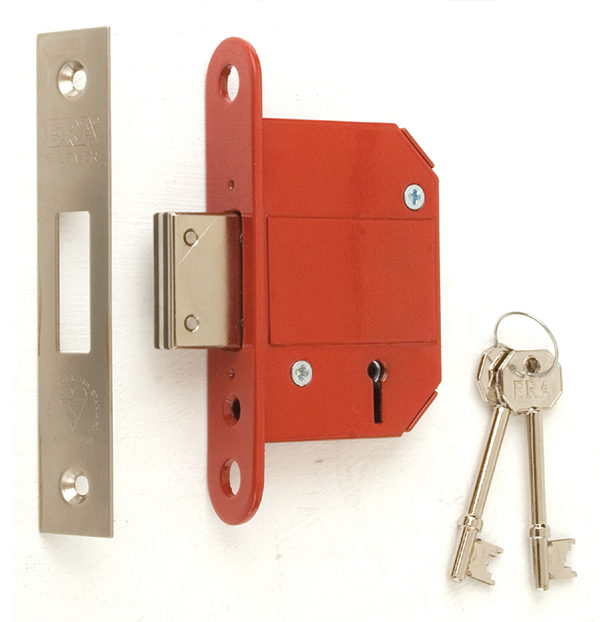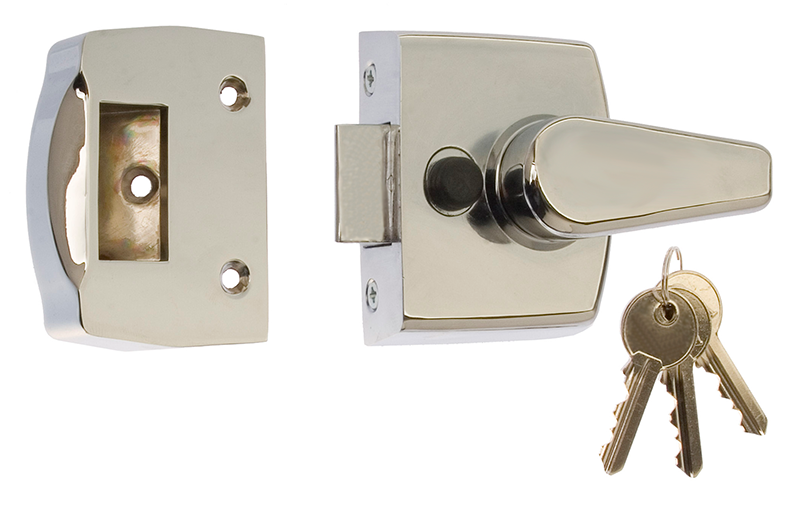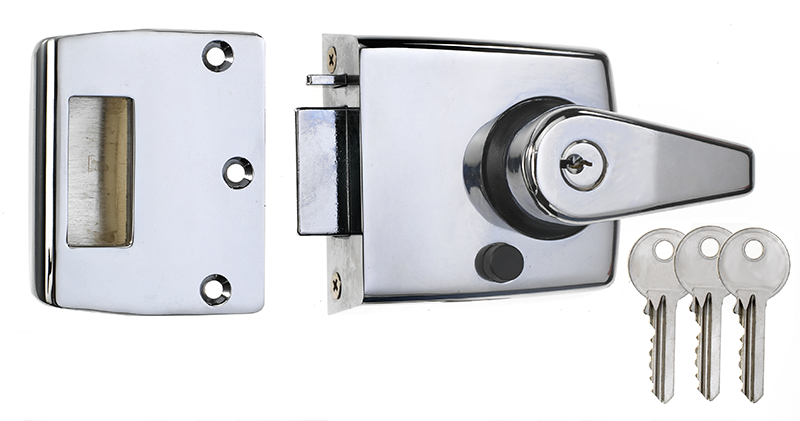Locks
Ailis Orourkea, 10 December 2017
Mortise deadlock
- Mortise locks fit into a slot cut into the edge of the door and usually can only be opened with a key.
- These should be upgraded to 5-lever locks tested and certificated to BS: 3621:2007. This is usually a minimum insurance requirement.
- The locks are based on a range of standard measurements so, with careful matching, replacement is easy.
- A deadlock means a thief can’t smash a nearby glass panel to open the door from the inside or, having entered through a window, cannot carry your belongings out through the door.

Rim lock or Night latch
- A rim lock is screwed to the face of the door and latches automatically when you close the door unless held open with the snib.
- Unless it also has the term deadlock attached, it can be opened by turning a knob.
- Rim locks should be tested and certificated to BS:3621:2007.

Automatic deadlocking rim lock
- This locks automatically when the door is closed and is more secure than other types of rim latch.
- It needs a key to open it from both the inside and the outside and should meet BS:3621:2007.
- Ideally both types of lock should be fitted to a door at roughly one third spacing.
- Both should be used to secure an empty home and just the night latch use during occupancy.

Multi-point locking
- These involve several hooks or bolts holding the door into the frame.
- The lock cylinders should be tested and certificated to TS 007 or SS 312 - Diamond Standard and can be replaced.
- If your door is BS: PAS24 and it requires replacement locks ensure they are changed like for like to continue the level of security.